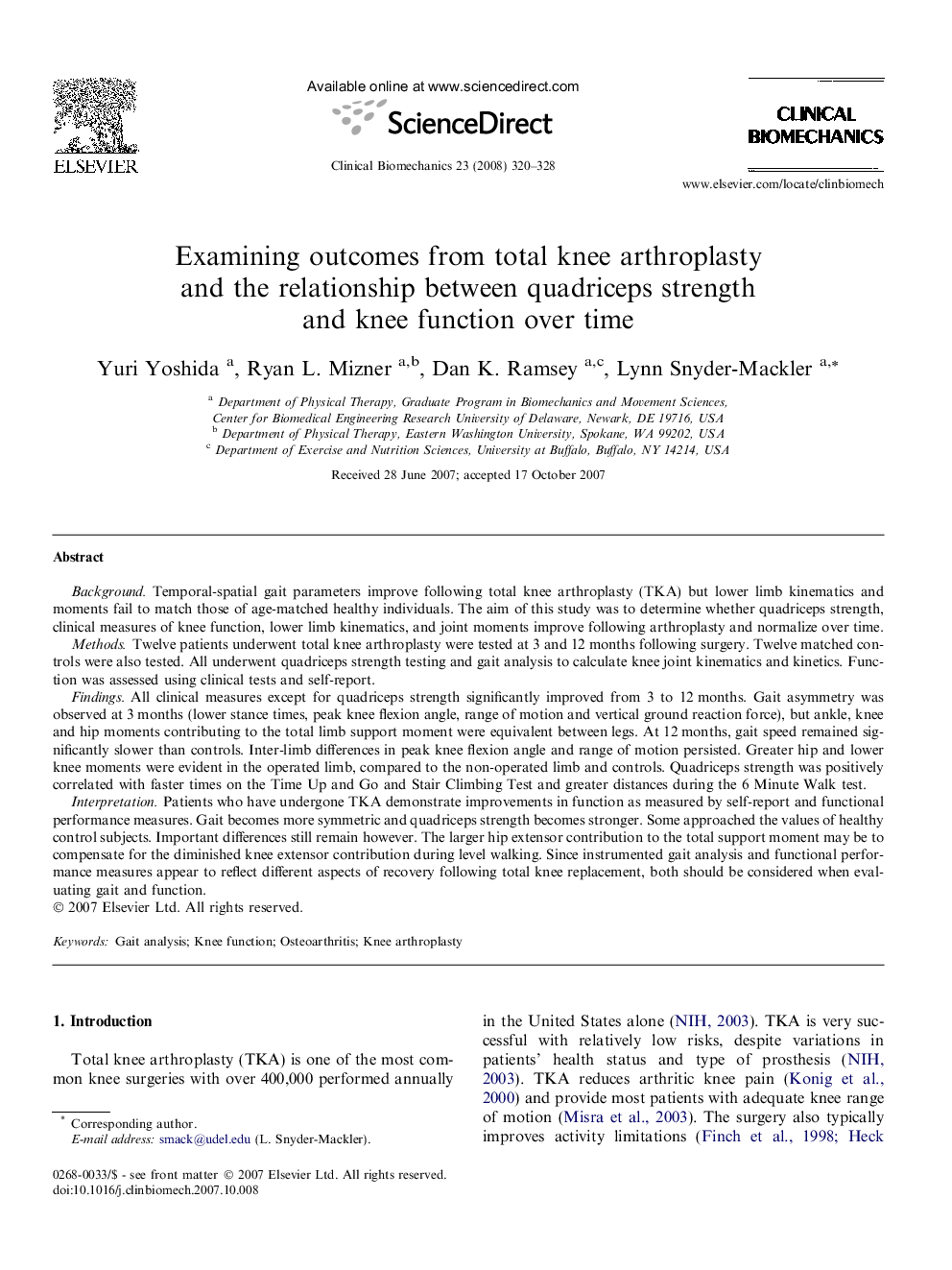| Article ID | Journal | Published Year | Pages | File Type |
|---|---|---|---|---|
| 4051584 | Clinical Biomechanics | 2008 | 9 Pages |
BackgroundTemporal-spatial gait parameters improve following total knee arthroplasty (TKA) but lower limb kinematics and moments fail to match those of age-matched healthy individuals. The aim of this study was to determine whether quadriceps strength, clinical measures of knee function, lower limb kinematics, and joint moments improve following arthroplasty and normalize over time.MethodsTwelve patients underwent total knee arthroplasty were tested at 3 and 12 months following surgery. Twelve matched controls were also tested. All underwent quadriceps strength testing and gait analysis to calculate knee joint kinematics and kinetics. Function was assessed using clinical tests and self-report.FindingsAll clinical measures except for quadriceps strength significantly improved from 3 to 12 months. Gait asymmetry was observed at 3 months (lower stance times, peak knee flexion angle, range of motion and vertical ground reaction force), but ankle, knee and hip moments contributing to the total limb support moment were equivalent between legs. At 12 months, gait speed remained significantly slower than controls. Inter-limb differences in peak knee flexion angle and range of motion persisted. Greater hip and lower knee moments were evident in the operated limb, compared to the non-operated limb and controls. Quadriceps strength was positively correlated with faster times on the Time Up and Go and Stair Climbing Test and greater distances during the 6 Minute Walk test.InterpretationPatients who have undergone TKA demonstrate improvements in function as measured by self-report and functional performance measures. Gait becomes more symmetric and quadriceps strength becomes stronger. Some approached the values of healthy control subjects. Important differences still remain however. The larger hip extensor contribution to the total support moment may be to compensate for the diminished knee extensor contribution during level walking. Since instrumented gait analysis and functional performance measures appear to reflect different aspects of recovery following total knee replacement, both should be considered when evaluating gait and function.
